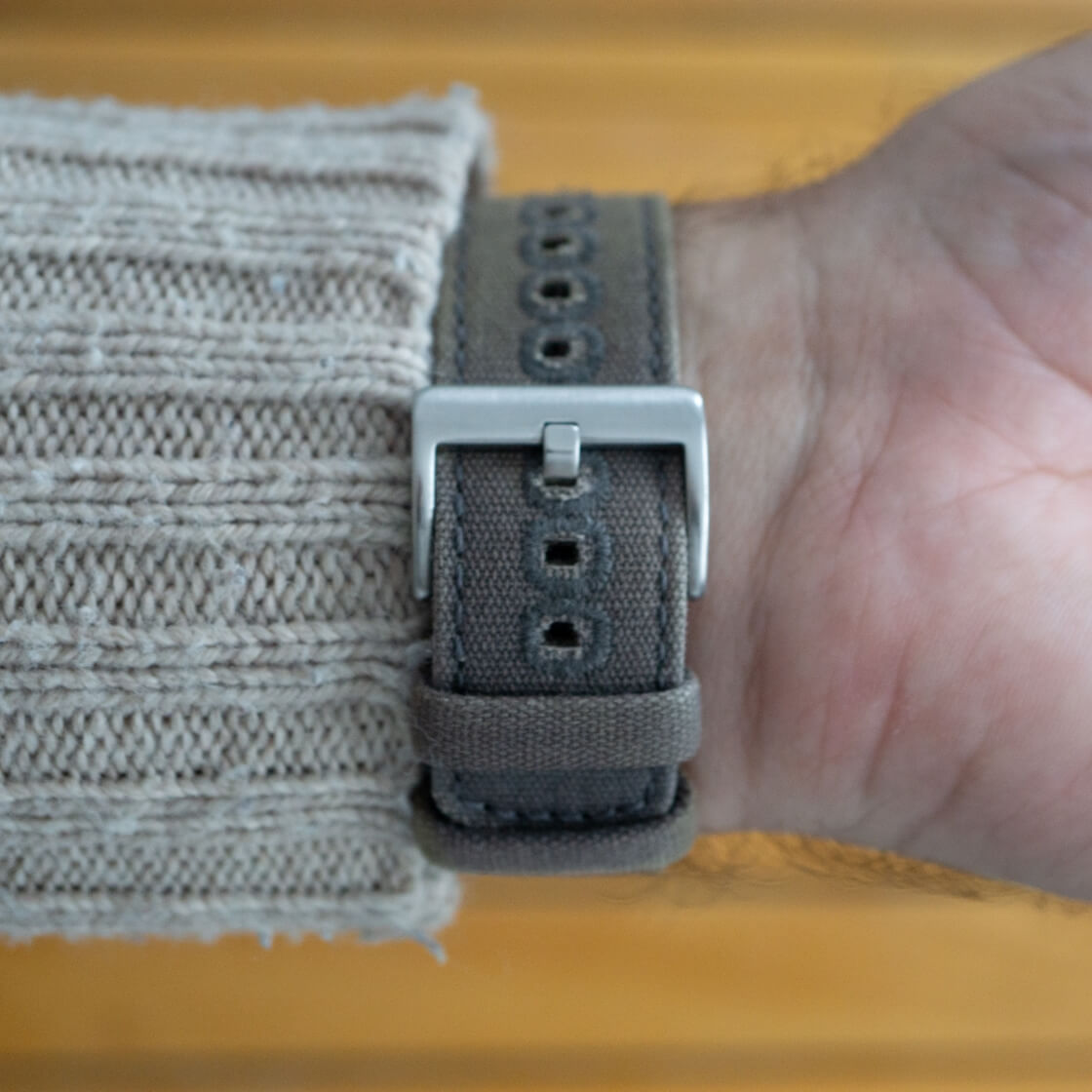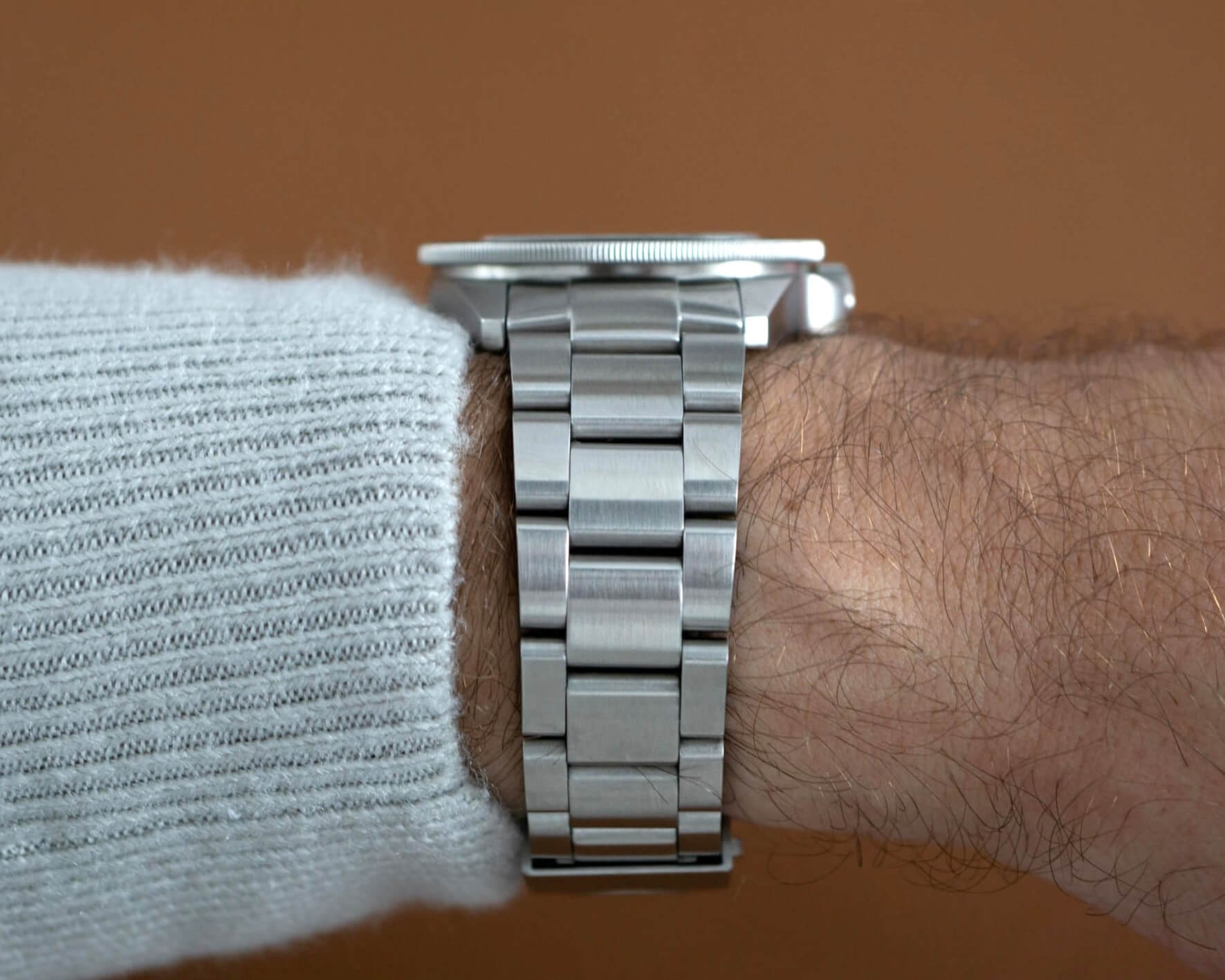Watch Rash Explained: Symptoms, Causes, and Treatment
A watch rash, also known as watch dermatitis, can occur when the skin reacts to certain materials used in watches, especially the components such as the case back, buckle, or from irritation caused by the strap rubbing against the skin. The rash is often characterized by redness, itching, and even blistering. Here’s a guide to help you recognize and manage watch rash.
![]() Nenad Pantelic • December 17, 2023
Nenad Pantelic • December 17, 2023

Signs and Symptoms of Watch Rash
If you notice any of the following symptoms in the area of irritation, you may be experiencing watch rash:
- Itching
- Dry, cracked, scaly skin
- Red rash
- Bumps and blisters
- Swelling, burning, or tenderness
But not all rashes are made equally. There are two main types of watch dermatitis.
If the skin is injured by friction, chemicals, or environmental factors, and cannot heal itself fast enough then this type of rash is called Irritant Contact Dermatitis.
There is also and an Allergic Contact Dermatitis that happens when the skin comes into contact with a substance that triggers an immune reaction.
Allergic contact dermatitis may manifest within hours or days after exposure, whereas irritant contact dermatitis tends to develop after repeated exposures.
The Painful Consequences of a Loose Watch Strap During Snorkeling
Speaking of repeated exposures I clearly remember one issue I had during a snorkeling vacation in Greece. As I explored the underwater, my nato strap became soaked and loosened, causing my watch to shift and flop around on my wrist. Unfortunately, this movement resulted in the watch changing position and digging into the top side of my wrist.
Over time, the friction and pressure caused by the watch against my skin led to discomfort, pain, and noticeable redness. Eventually, the watch's movement scraped a bit of skin, worsening the discomfort and adding to the irritation.
Materials Matter
One factor contributing to watch rash is the composition of the watch case. In particular, older vintage watches often have cases that are plated with a thin layer of precious metals like gold. Over time, this plating can wear out, exposing the base metal beneath, which may trigger skin reactions in some individuals. Additionally, some vintage watches were plated using materials like chrome or nickel, which are notorious for causing skin irritations and allergies.

Also, the materials used in watch straps can also play a role in causing watch rash. Leather straps, for example, may undergo manufacturing processes involving dyes and paints that can potentially cause reactions when in contact with the skin. Similarly, some glues and adhesives used in strap assembly may contain substances that irritate sensitive skin.
On the other hand, materials such as stainless steel and titanium are less likely to cause watch rash. Both stainless steel and titanium are known for their hypoallergenic properties, making them suitable choices for individuals prone to skin sensitivities.
Here is How You Can Deal With a Watch Rash
1. Remove the Watch: As soon as you notice the rash, remove the watch to prevent further irritation. Allow the affected area to recover and avoid wearing the watch until the rash has healed.
2. Clean the Affected Area: Gently clean the affected area with mild soap and water. Avoid using harsh soaps or abrasive substances that may worsen the irritation.
3. Apply a Cold Compress: If there is swelling or discomfort, you can apply a cold compress or a clean, cool cloth to the affected area for short periods. This can help weaken inflammation.
4. Use Over-the-Counter Creams: Apply over-the-counter hydrocortisone cream or a mild, fragrance-free moisturizer to soothe the skin and reduce itching. Of course, please follow the instructions on the product label.
5. Avoid Scratching: It is important to resist the urge to scratch the affected area, as this can worsen the rash and may lead to infection.
6. Consult a Healthcare Professional: If the rash persists or worsens, it's wise to consult a dermatologist or healthcare professional. They can assess the rash, determine the cause, and provide appropriate medical advice or treatment.
7. Identify the Allergen: Determine the specific material causing the allergic reaction. Common allergens include nickel or chrome, metals often found in watch components.
8. Consider a Barrier: Wear the watch on a pass-through strap. This can create a barrier between the metal and your skin, reducing direct contact.
9. Opt for a Different Strap: If the rash is due to the strap, consider changing to a different type of strap made from materials like rubber, canvas, sailcloth or nylon which are less likely to cause skin reactions.
10. Regular Cleaning: Keep your watch and its components clean by regularly wiping it down with a soft, damp cloth. This helps remove potential irritants and prevents the buildup of sweat and bacteria.
Final thoughts
By understanding the signs, causes, and management strategies for watch rash, you can take proactive steps to keep your skin healthy and comfortable while wearing your watch.
The rash is usually healed within a few days, so it won't take long until you can put your watch back on.
Please remember, individual reactions can vary, and it's crucial to address the issue promptly to avoid further discomfort. If the rash persists or worsens, seeking professional medical advice is recommended.
Disclaimer: I am not a licensed medical professional. The information provided in this blog post about watch rash is based on personal experience and research. Readers are advised to consult with a qualified healthcare professional for diagnosis, treatment, and personalized medical advice. Any actions taken based on the content of this post are at the reader's own risk.